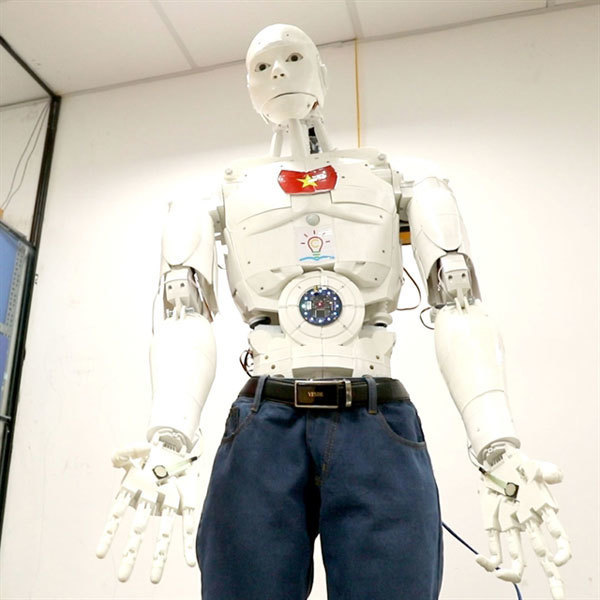The prime minister on March 16 issued Decision No.10/2021/QD-TTg on the criteria for high-tech business recognition, announcing higher standards for smaller scales of capital and facilitating other factors to pick up a wave of investment in one of the most-sought after sectors.
Under the new decision, high-tech businesses must meet the criteria as ruled in Article 75 of the Law on Investment 2014 and the following criteria on revenue, research and development (R&D) expenditures, and their workforce. As such, revenues from high-tech products must make up at least 70 per cent of the total annual net revenue.
Moreover, spending on R&D by a high-tech business must account for 0.5-2 per cent of annual net revenue depending on corporate scale and total capital. These investments must be at least 0.5 per cent for a top-tier high-tech business with total capital of VND6 trillion ($260.87 million) and higher, and 3,000 labourers or more. The threshold is 1 per cent for second-tier businesses with total capital of VND100 billion ($4.35 million) and higher, and a workforce of at least 200 people. Meanwhile, the rate is at least 2 per cent for third-tier businesses.
In regard to the criterion on workers involved in R&D activities, their rate must be at least 1 per cent for top-tier businesses, 2.5 per cent for second-tier ones, and 5 per cent for the remainder. They must have qualifications of at least a college degree.
Le Bich Loan, deputy director of the Saigon Hi-Tech Park (SHTP), told VIR, “The new decision marks an important adjustment, which renders the criteria more suitable with the reality, and encourages mammoth high-tech groups to make investments in Vietnam.”
Some domestic and foreign-invested enterprises located in the SHTP have received recognition as high-tech ones, such as Samsung and Nanogen.
With the new decision, there are requirements for high-tech businesses with the total capital of VND6 trillion ($260.87 million) and more, thus separating them from the group of second-tier ones. In the previous decision there were requirements for just two kinds of high-tech businesses – which are now the second- and third-tier ones.
With the new rules, second- and third-tier businesses must meet higher criteria than those in the past, except for high-tech revenues.
A representative of Bosch Vietnam said, “We are now looking through the new decision to see how the changes will impact our operations. Bosch Vietnam has been recognised as a high-tech company for years and enjoys the incentive policies.”
As shown in Decree No.12/VBHN-BTC from 2015 guiding the implementation of the Law on Corporate Income Tax, high-tech businesses enjoy 10 per cent of the tax (CIT) within 15 years, a four-year exemption of CIT, and a reduction of 50 per cent of CIT in the following nine years dating from the recognition.
The requirements could prove more challenging for newcomers of second- and third-tier businesses, but more favourable for top-tier ones. Moreover, they may ignite a race for recognition before April 30 to gain the incentives.
The decision states that high-tech businesses that already submitted documents seeking the high-tech recognition before April 30 must satisfy the new regulations.
Vietnam now has 58,000 digital technology businesses, and the country targets to increase the number to 100,000 by 2030. The Ministry of Information and Communications believed that with the strong establishment of digital technology companies thus far, the number can be reached by 2025.
The change in the criteria is seen as inevitable during the Fourth Industrial Revolution, and Vietnam is accelerating its digital transformation to develop a digital government, economy, and society. In this trend, the attraction of high-tech investment is among the top priorities.
As shown in the Politburo’s issuance of Resolution No.50-NQ-TW, giving directions to complete the legal framework on foreign direct investment attraction by 2030 with an aim to further increase the quality, priority is given to projects with advanced and new technologies offering high added value and advantages for global supply and production chains.
With a young population and a strong high-tech investment attraction strategy, Vietnam has endeared itself to high-tech companies looking to establish a long-term hub for software development and hardware manufacturing.
|
Alexandre Sompheng - Chairman, EuroCham’s Digital Sector Committee Now is the time for the high-tech companies to cash in on this opportunity and take part in the education ecosystem, allowing themselves to balance their R&D expenses and compensate for the investment barriers. Singapore is a good example in the region. The government of Singapore has set a clear plan to transform the city state through technology innovations. We encourage the Vietnamese government to improve their sets of rules enabling all segments of the economy and society to harness new technologies to achieve its comprehensive digital transformation aspirations. |
VIR

Vietnam to have 500 high-tech manufacturers by 2030
The national high-tech development program focuses primarily on assisting local enterprises to master high technologies.

Vietnam’s digital technology firms on road to success
Participants at the National Forum on Developing Vietnam’s Digital Enterprises all agreed that never before have Vietnam’s digital technology firms developed so strongly.
